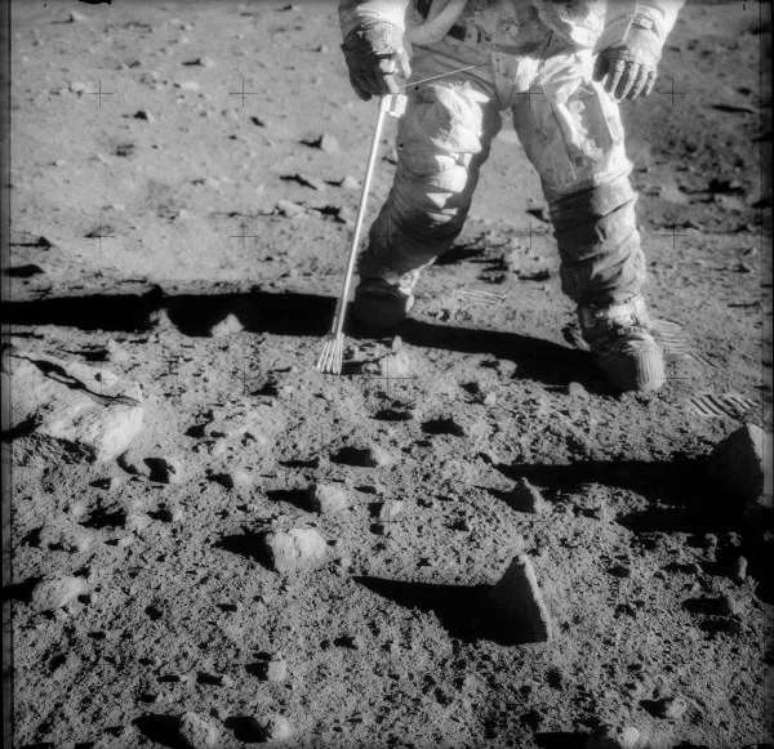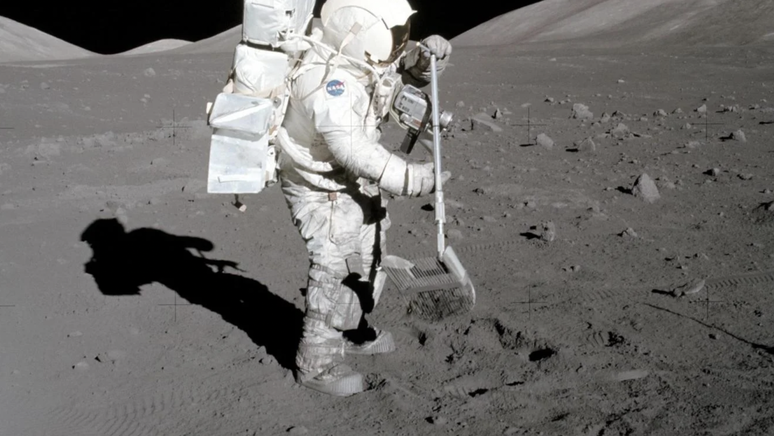The researchers tested a spray of liquid nitrogen on simulated lunar dust, which removed more than 98% of the particles and caused minimal damage to the material.
A spray of liquid nitrogen, developed by researchers at the University of Washington in the US, could be a promising tool for the future manned missions to the moon. During testing, the spray removed more than 98% of the lunar dust simulated in a spacesuit in a vacuum, causing minimal damage to the material.
A dust covering the moon it has silicates, compounds common in planetary bodies with volcanic activity. This powder is so abrasive that it has eaten into the layers of the astronauts’ spacesuit boots Apollo program and even the vacuum seals destroyed on sample containers.

In addition to being fine and very sharp, lunar dust remains suspended longer on the Moon due to the lower gravity on our natural satellite, and can cause health problems when inhaled. “Moondust is electrostatically charged, is abrasive and sticks to everywhere, making it a very difficult substance to handle,” noted Ian Wells, who led the study.
With this in mind, the researchers developed the spray based on the so-called “Leidenfrost effect”. It is a process that occurs when a liquid, in contact with a surface hotter than its boiling point, forms a protective layer of vapor capable of preventing the liquid from evaporating rapidly. This is what happens when droplets of water are dropped into a heated pan: water vapor builds up under the liquid and above the pan, keeping the droplet suspended, not in direct contact with the hot metal. Thus, the water takes longer to evaporate than if the pan were above boiling temperature.
In the case of a spray, the -195°C nitrogen comes into contact with a hotter surface covered with dust; then the particles are bunched together and dispersed in the vapor. The cleaning method was tested by the team on a doll surrounded by a material used in space suits, under normal conditions of temperature and pressure, and in a chamber simulating outer space conditions.
Below, you can see a demonstration of what a moondust remover spray can become:
They noted that the spray worked better in a vacuum and was much less aggressive to the spacesuit material than other methods used: the brushes damaged the material after a single use, while the nitrogen spray took 75 cycles to cause damage.
Now, the researchers want to understand and model the interactions that occur between dust particles and the liquid nitrogen that enables the cleaning process. Additionally, they requested support to test the technology in conditions closer to those found in space, such as moon Gravity.
The article describing the results was published in the journal Acta Astronautica.
Source: Acta Astronautica; Through: WSU extension
Trending on Canaltech:
- The study indicates the minimum daily time of physical activity to maintain health
- Alzheimer’s disease linked to fructose in the brain
- The government bans animal testing for cosmetics and perfumes
- FGT | Will the birthday loot run out?
- The 10 most watched series of the week (02/26/2023)
- WHO warns of the risk of spreading the Marburg virus
Source: Terra
Rose James is a Gossipify movie and series reviewer known for her in-depth analysis and unique perspective on the latest releases. With a background in film studies, she provides engaging and informative reviews, and keeps readers up to date with industry trends and emerging talents.



![Such a wonderful sun in advance: Summary of the episode on April 24, 2025 [SPOILERS] Such a wonderful sun in advance: Summary of the episode on April 24, 2025 [SPOILERS]](https://fr.web.img6.acsta.net/img/70/35/70353326c83722ff12358c73a125a6d4.png)


-qxirzktzzz35.png)
